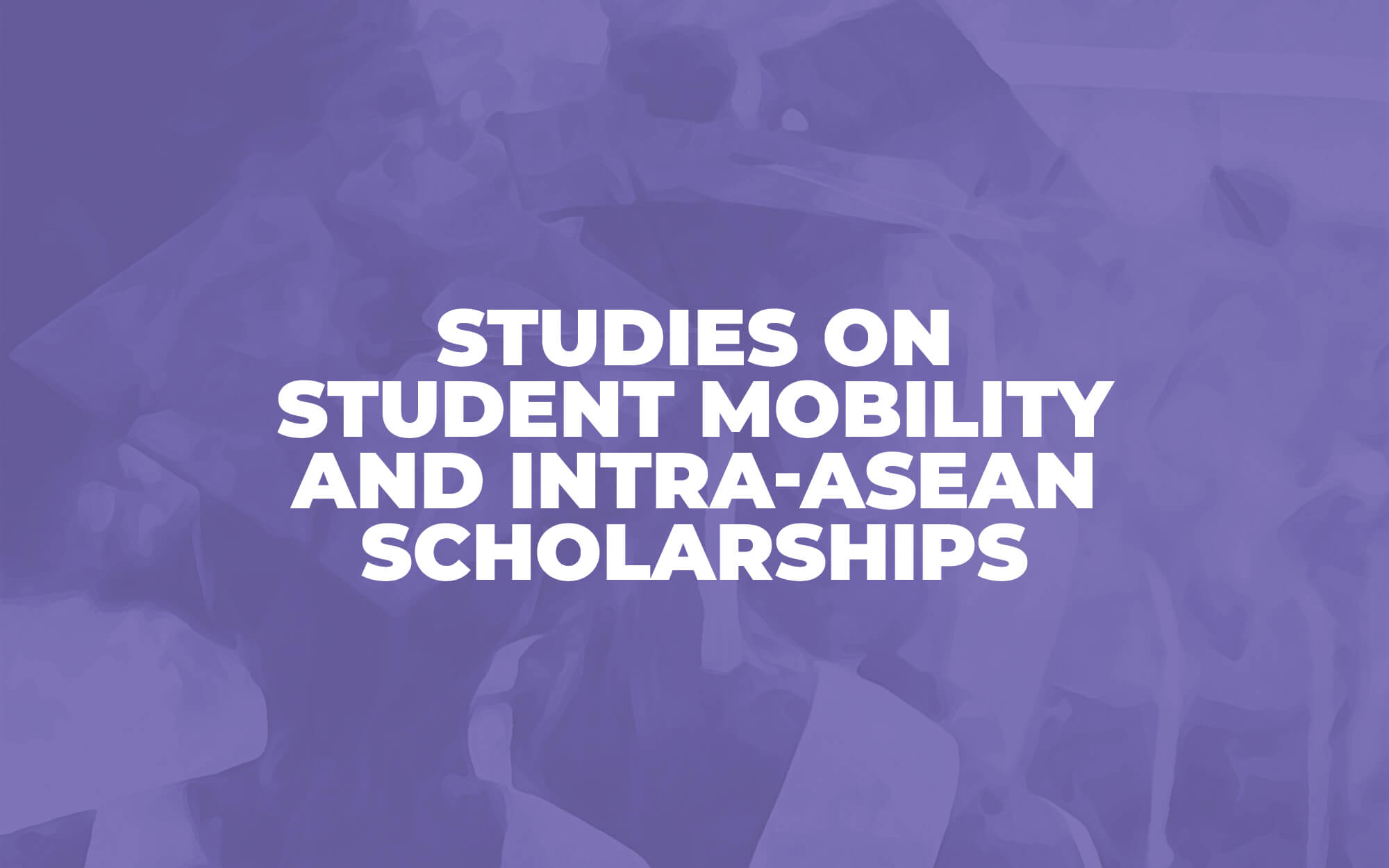





The ASEAN region is noted for its economic vitality, and in recent years, some of the world's fastest-growing digital industries have emerged in the region. The COVID-19 pandemic accelerated this trend, with an increase of 60 million more digital customers since the pandemic began. The internet economy is on track to account for 360 billion US dollars by 2025. According to a Google and Temasek report, ASEAN is the region with the fastest-growing internet economy. By 2020, the user base is anticipated to increase to 480 million from 260 million users in 2016. Parallel to this, digitalisation has impacted ASEAN societies and brought with it an expanding number of advantages and conveniences. These include the expansion of the digital economy, fresh avenues for learning and working, and closer bonds with loved ones.
As the internet becomes an indispensable source of knowledge and information, digital access is essential for the growth of a knowledgeable and connected populace. However, segments of the ASEAN population, particularly those who belong to vulnerable groups, remain digitally excluded. This can be attributed to common obstacles, such as lack of access to technology, lack of expertise, and discomfort with using technology. ASEAN Member States must be prepared for the digital age in terms of both the availability of connectivity infrastructure and the widespread adoption of technology by enterprises, governments, and the general public. If development is unequal, the digital gap may get worse.
To promote the digital readiness of ASEAN Member States, the Framework for Developing Digital Readiness Among ASEAN Citizens was adopted during the 15th Conference of the ASEAN Ministers Responsible for Information (AMRI) held in March 2021. The framework, which is comprehensive, non-binding, and aspirational, situates the sector’s ongoing work on digital communication, information access, and literacy within a larger context of creating “digital readiness” among ASEAN residents. This framework has identified three interrelated elements relevant to digital readiness, namely (i) digital access; (ii) digital literacy; and (iii) digital participation.
Focusing on digital literacy, access, and participation to increase readiness
In the modern era, the proliferation of digital technologies has brought about profound changes in various facets of human life, from communication and education to commerce and governance. As societies increasingly rely on digital platforms and tools, the concepts of digital literacy, digital access, and digital participation have emerged as cornerstones of digital readiness. This section explores how these three interrelated elements enhance the level of digital readiness in individuals and communities, ultimately fostering empowerment and preparedness in the digital age.
Digital literacy, access, and participation are crucial to enhancing digital readiness in the ASEAN region. As ASEAN countries continue to develop and integrate technology into various aspects of their societies, these factors contribute to their preparedness to engage effectively and benefit from digital advancements.
i. Digital Literacy: Navigating the Information Landscape
Digital literacy in the ASEAN region equips individuals with the skills to navigate the digital landscape, utilise technology, and critically assess digital information. It enables people to access and evaluate information from various sources, promoting informed decision-making; facilitates the safe and secure use of digital tools, which counter online threats and cybercrimes; fosters regional and global connections; and helps people embrace digital solutions for addressing local challenges like healthcare, education, and agriculture.
ii. Digital Access: Bridging Socioeconomic Divides
Digital access ensures that people across the ASEAN region have the necessary tools and infrastructure to participate in the digital world. It allows individuals and communities to access online educational resources and remote learning opportunities to bridge gaps in education; participate in the digital economy through e-commerce, online marketplaces, and digital financial services; connect with government services and information, promoting transparency and efficiency; and engage in telehealth services, especially in remote or underserved areas.
iii. Digital Participation: Engaging and Contributing
Active digital participation empowers individuals to contribute to the digital ecosystem and benefit from its opportunities. In the ASEAN context, digital participation enables people to share local knowledge, culture, and traditions globally, promoting cultural exchange; collaborate on regional initiatives, such as environmental conservation and disaster management; harness the power of social media to raise awareness about social issues and drive change; and develop digital skills that are relevant to emerging sectors, fostering innovation and entrepreneurship.
In the ASEAN region, where countries vary in economic development, urbanisation, and technological infrastructure, addressing digital readiness is particularly important. Governments, organisations, and stakeholders across the region can work together to:
- Provide digital literacy training programmes to equip citizens with essential skills.
- Invest in improving digital infrastructure to ensure widespread access to technology and the Internet.
- Foster digital inclusion policies that prioritise marginalised and underserved populations.
- Promote cross-border collaboration and knowledge-sharing to accelerate digital growth.
The ASEAN region can enhance its overall digital readiness by fostering digital literacy, ensuring equitable digital access, and encouraging active digital participation. This, in turn, can lead to improved economic growth, social development, and global competitiveness within the rapidly evolving digital landscape.

Digitalisation and sustainable development efforts
Digitalisation refers to the use of digital technologies to transform processes, operations, and communication within an industry or sector. The emergence of the carbon market in Asia in the last decade is directly related to commerce, finance, and entrepreneurship, and can be considered an emerging digitalisation trend. The carbon market is closely related to the Sustainable Development Goals (SDGs) through its potential to contribute to global efforts to address climate change and promote sustainable development. In the context of the carbon market, digitalisation plays a significant role in enhancing its efficiency, transparency, and accessibility. Some of the ways digitalisation is influencing the carbon market include:
- Digital emissions tracking and reporting can facilitate real-time monitoring and reporting of emissions, enabling companies to track their carbon footprint more accurately. This type of data can be used for compliance with emission reduction targets and for trading carbon credits.
- Block chain technology can offer a decentralised and transparent platform for recording carbon credit transactions. It helps verify the authenticity of carbon credits and ensures their proper accounting and trading, reducing the risk of fraud.
- Advanced data analytics can analyse large datasets related to emissions, energy consumption, and carbon offsets. This information can assist businesses in making informed decisions to optimise their carbon reduction strategies.
- Devices and smart sensors can be employed to monitor energy usage and emissions in real-time. These data can be integrated into the carbon market platforms, enabling more accurate carbon credit calculations. Digital platforms serve as marketplaces where buyers and sellers of carbon credits can connect, negotiate, and execute transactions efficiently.
The combination of the carbon market and digitalisation holds great potential in accelerating the transition to a low-carbon economy, encouraging sustainable practices, and contributing to global efforts to combat climate change. Overall, the carbon market can be a valuable tool in the global effort to address climate change and contribute to achieving the SDGs by promoting environmentally responsible practices and supporting sustainable projects worldwide.
However, the most challenging task is how to involve local communities in the carbon market mechanism. Without them, the pathway to carbon net zero will not be possible. Ultimately, achieving carbon reduction requires a collective effort involving governments, businesses, communities, and individuals. It will require a shift in values, behaviours, and policies to prioritise sustainability and long-term well-being over short-term consumption. As consumers, each of us can play a vital role in making informed choices, supporting sustainable practices, and advocating for a more environmentally responsible future.








